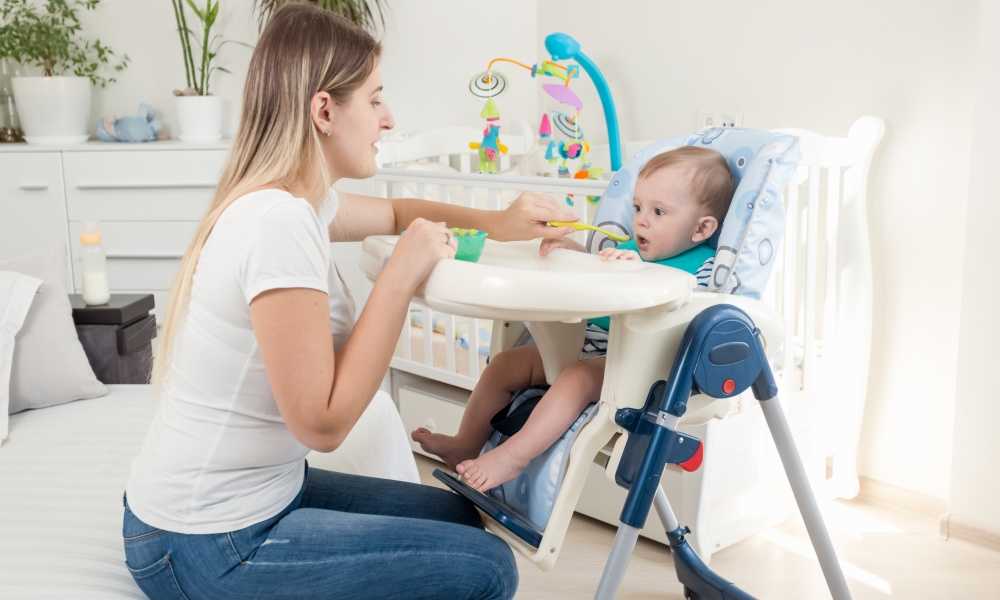Every child develops at their own pace. Some are the slow and steady type, while others charge ahead at full speed. Every child is different, even within the same family.
So when someone asks when it’s time for a child to move on to the next stage of development, experts agree that you need to watch your child for those answers.
One of those stages of development that parents ask about is when should their child leave the high chair to sit at the table in a regular chair. For some children, that would be 2-years. For others, it would be out of the question until age 4.
As parents, everyone want to know that when can baby sit in high chair answer is we need to listen to what our children tell us in certain matters, and this is one of them. I mean really, we don’t normally see 10-year-olds sitting in high chairs. Somehow we all learn to leave them behind for the “big kid” seat.

One of the first telltale signs is that your child is decidedly too big to fit comfortably in the high chair any longer. The adjustable food tray is all the way out and the security belt is just too tight. Take pity on the child and graduate them to a booster seat. Don’t get caught up in the fact that they’re only 2 years old. They’re ready to move on and their body is telling you so.
Another sign is that your child fusses and frets when you want to put him in the high chair. As a family member, they want to sit in a big chair like everyone else. Or, once secured in the chair, they will try to climb out, a very dangerous business indeed since they could fall out or topple the chair. Relent and try them in a toddler booster. They may surprise you with their ability to handle it.
Notice when your child tries to climb on the regular dining chair to sit at the table during mealtime or at other times to be with the family. It’s time to start looking for a booster seat. Perhaps your high chair already has one built in. Don’t be afraid to try it, but ask if your child would like to. Most likely they will say yes, and then you’re off on a new adventure together.
If your child is the quieter type and unlikely to take matters into his own hands, you might just realize that it’s time to move him out of their baby high chair without any cues from them. Ask if they’d like to sit in a toddler seat. Watch their reaction. If their eyes light up at the prospect and their face gladdens with anticipation, they’re ready.
Don’t get caught up in the numbers game or competition with your neighbor’s child. So what if her son started sitting in a booster chair at 18 months? He was ready for it. You child may not be ready until they’re 2. Let them be; let them set the pace.
After all is said and done, our children take their cues from the programming in their brains. We take our cues from our children. In lots of ways, they let us know when they’re ready for the next stage in their development. While we may want them to grow up, we know we will miss those days when they were babes in arms, and we could sing them to sleep with a bottle and a lullaby.
But babies don’t stay babies forever and thank goodness for that. They grow up into adults who are fun to be with and spend time with. We still take cues from them about their needs like when is a good time to hug, or when they need a dinner visit from us bearing their favorite meal.

FINAL VERDICT
And then, the reward is a new generation to love, to take cues from. And we can teach our children how to read their children, just as we read them as they were growing up.

